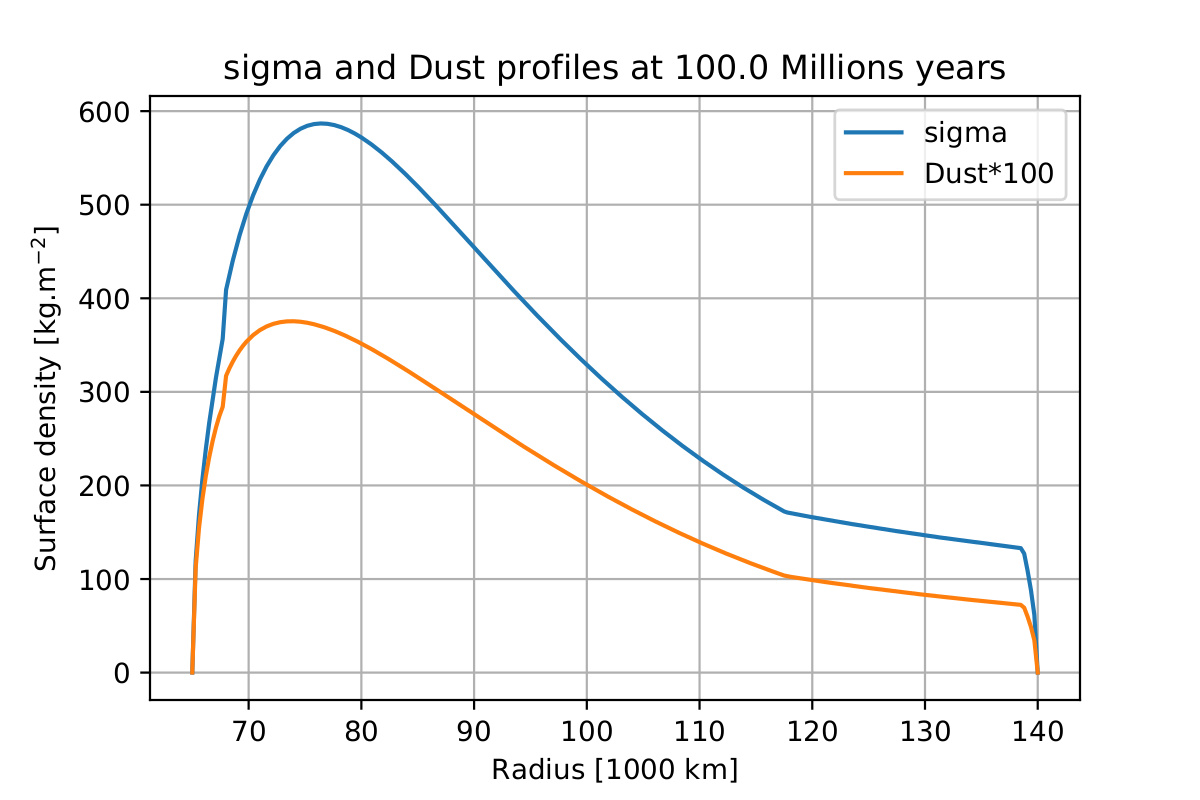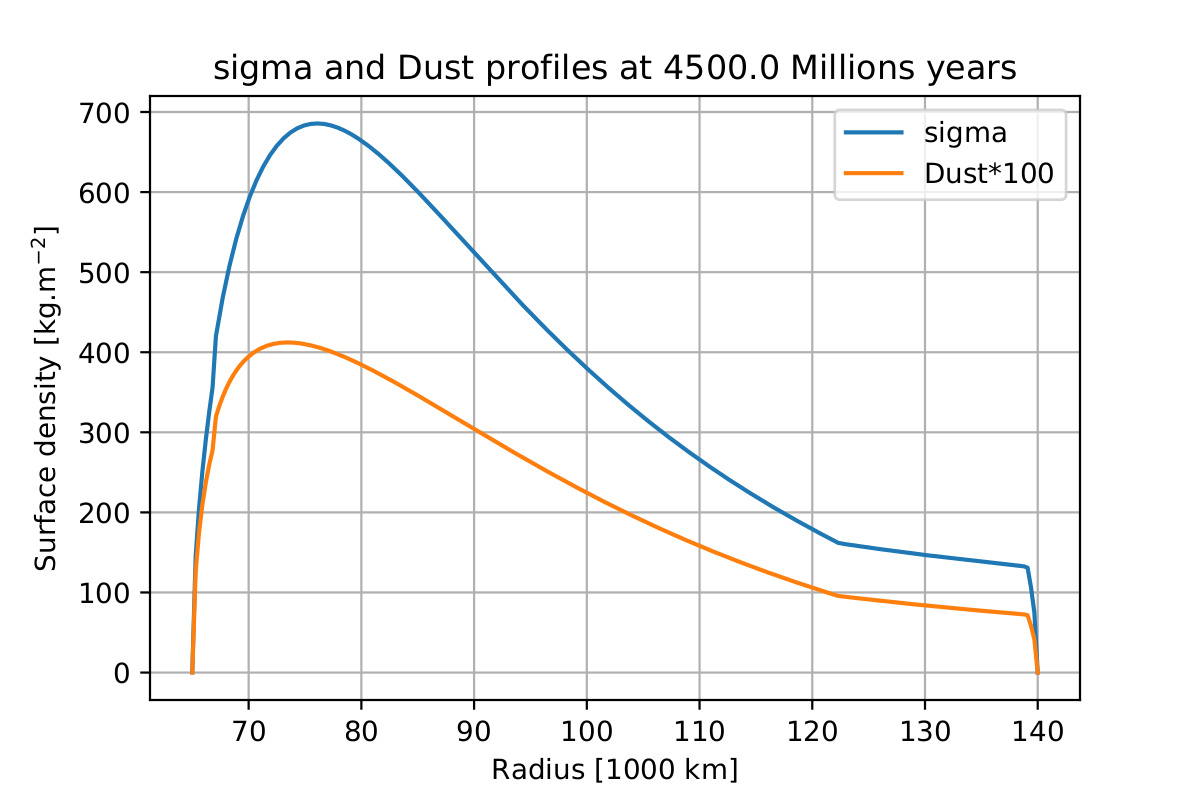Effects of cleaning in Saturn's rings
- 1Université Côte d'Azur, Observatoire de la Côte d'Azur, UMR7293 Lagrange, 06304 NICE cedex 4, France
- 2Master Géologie, Géophysique, Géotechnique, Université Côte d’Azur, Département des Sciences de la Terre, Parc Valrose, 06100 Nice, France
Saturn's rings are well known for many good reasons, one of them being their brightness. Made of almost 99% water ice, they are by far the most ice-rich object of the solar system, and their composition is still a puzzle. Most formation models rely on the stripping of the icy mantle of a large body, be it by colision with a comet or tidal disruption of a passing centaur or a migrating satellite, providing the rings with an initial pure water composition. However, the rings are constantly bombarded by micrometeorites, which are made of at least half non icy material (hereafter "dust"). Based on the percentage of dust in the rings (Zhang et al. 2017a,b), the mass of the rings (Iess et al. 2019), and estimates of the bombardment rate, an exposure age of 10 to 100 million years has been derived. This age is simply the time it would take to bring all the dust observed in the rings through a constant bombardment at the present rate, assuming the rings are initially devoid of dust and keep all the pollution they recieve. It had been initially interpreted as the physical age of the rings (as illustrated by Figure 1). Crida et al. (2019) have shown that the exposure age and the formation age are actually two different concepts and could differ. This claim is supported by the results by Hsu et al. (2018) and Waite et al. (2018) who have found that the rings lose non icy material into Saturn ; this suggests the existence of some unknown but non-negligible cleaning mechanism.
Here, we explore the possibility of a cleaning mechanism in the rings, and perform numerical simulations and analytical calculations of the evolution of the pollution rate in the rings for various scenarios. When the cleaning is modeled by a characteristic time τc such that the time derivative of the dust density d is -d/τc , an equilibrium dust profile exists, and the dust fraction doesn't grow linearly with time. In fact, if the initial composition of the rings is more dust-rich than the equilibrium profile, the dust fraction then decreases with time to converge towards this equilibrium. Such a (yet unknown) cleaning mechanism would open the possibility for initially non-pure ice rings, if the cleaning time is shorter than the age of the solar system.
More interestingly, the equilibrium profile is similar to the one obtained without cleaning but for a ring age of τc . In other words, there is no way of deciding whether the exposure age represents the real age of the rings or their cleaning time, as illustrated by how similar the figures 1 and 2 are. We find parameters that allow to reproduce the present rings density and pollution after 4.5 Gyr of evolution (figure 2). This shows that old rings are still a valid possiblity, and that the theory of their cleaning desserves further investigation.

Figure 1 : Ring density profile (blue) and dust density profile (orange) after 100 Myrs of viscous evolution with a meteoritic bombardement following the parameters used by Zhang et al. (2017a), starting with a density profile equal to the one shown in figure 2, but with zero dust. No cleaning is used in this simulation. The result is similar to the actual A and B rings, showing that they correspond to 100 Myrs exposure age.

Figure 2 : Ring density profile (blue) and dust density profile (orange) after 4.5 Gyrs of viscous evolution reproducing Salmon et al. (2010), with a meteoritic bombardement following the parameters used by Zhang et al. (2017a) and a cleaning time τc = 100 Myrs. The result is almost identical to the one of Figure 1, and doesn't depend on the initial dust content of the rings, showing that an efficient cleaning mechanism can reconcile old rings with their apparent youth.
References:
Crida A., Charnoz S., Hsu H.-W., Dones L. (2019) Are Saturn's rings actually young ? Nature Astronomy 876, 437
Hsu H.-W. et al. (2018) In situ collection of dust grains falling from Saturn’s rings into its atmosphere. Science 362, eaat3185
Iess L. et al. (2019) Measurement and implications of Saturn’s gravity field and ring mass. Science 364, eaat2965
Salmon J., Charnoz S., Crida A., Brahic A. (2010) Long-term and large-scale viscous evolution of dense planetary rings Icarus 209,771-785
Waite J. R. et al. (2018) Chemical interactions between Saturn’s atmosphere and its rings. Science 362, eaat2382
Zhang, Z. et al. (2017) Exposure age of Saturn’s A and B rings, and the Cassini Division as suggested by their non-icy material content. Icarus 294, 14–42
Zhang, Z. et al. (2017) Cassini microwave observations provide clues to the origin of Saturn’s C ring. Icarus 281, 297–321.
How to cite: Crida, A. and Bramardi, G.: Effects of cleaning in Saturn's rings, European Planetary Science Congress 2021, online, 13–24 Sep 2021, EPSC2021-393, https://doi.org/10.5194/epsc2021-393, 2021.

